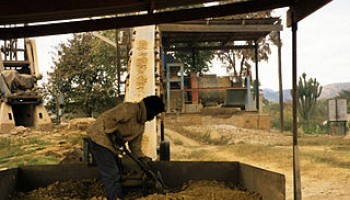In what could be called a ‘construction mafia’, since 2019 several groups across the country have extorted no less than 183 infrastructure and construction projects worth over R63 billion (US$3.9 billion) via protection rackets.
Different gangs trace their roots to different areas. In the Umlazi and KwaMashu, for instance, two rival groups even joined forces in 2015 to form what is known as the Federation for Radical Economic Transformation (FFRET), which subsequently began invading construction sites across South Africa’s KwaZulu-Natal province the following year.
The Federation demanded a cut of the construction contract’s value and employment for their members. By 2019, almost all construction sites within the province had fallen under the influence of FFRET or other local groups, and faced violence if their demands were not met.
One construction manager in particular spoke of how a certain group walked onto a site and demanded to see the boss. They then explained how they intended to extort him for ‘protection money’ and how eight of their group’s members would receive employment for the duration of the project.
At another construction site, members approached the owner and handed him an AK-47 bullet. They then told him, “This bullet was worth R17 ($1). That is the cost of your life if you do not comply with us.”
What gave rise to this ‘construction mafia’?
GI-TOC argues that at the end of apartheid in 1994, many sectors of South Africa’s economy did not change to meet the more progressive social stratification standards.
Unemployment remained rampant and rising income inequality meant that whole communities were resigned to the margins of the mainstream economy. Volatile sentiments of exclusion, alienation, and disillusionment with the direction the country was heading in soon followed.
As it is in all parts of the world, where there are no means for people to earn a living within the confines of the law, they will be forced to turn to crime in order to put food on the table.
It is through this rationale that South Africa’s construction mafia groups justify the path they have chosen, according to GI-TOC.
By 2018, the problem had become so pervasive that the country’s entire construction sector was under threat of invasion and extortion, with on-site crews being threatened with violence and death if they failed to comply.
Construction mafia groups will often demand 30% of a given site’s contract value. This figure is identical to the one stipulated in South Africa’s Preferential Procurement Policy Framework Act, which outlines that 30% of public procurement contracts must be allocated to designated groups.
In this case, the Act refers to local workers. So if a government project is worth R50 million ($3.1 million), 30% must be allocated to those who reside in the immediate area.
If challenged, however, these organized crime groups have demonstrated that they will not be the ones to blink first.
In January 2016, for instance, members of the Delangokubona Business Forum faced resistance in their demands and subsequently besieged the city’s electricity depots. They also threatened workers with death and assaulted crews who set out to repair the sabotage they inflicted on the city’s infrastructure.
These members were noted to have been ex-convicts who had committed a number of violent crimes including murder, robbery, and rape, according to GI-TOC.
Since then, construction mafia groups have sought to make more of a menacing first impression on construction managers by walking onto the sites armed with machetes and automatic rifles.
This terrorization appears to have created a never-ending circle of violence for those in South Africa’s construction sector.
Webster Mfebe, the CEO of the South African Forum of Civil Engineering Contractors (SAFCEC), recognized that there is no end in sight, as the success construction mafia groups find in their methods will only encourage others to emulate them.
“Violence begets violence,” Mfebe said. “When people have seen that extortion methods yield results, they mimic the same tactics and strategies.”






